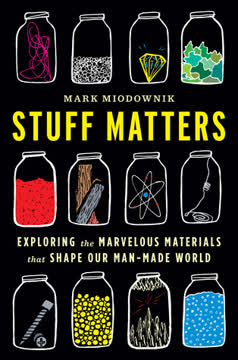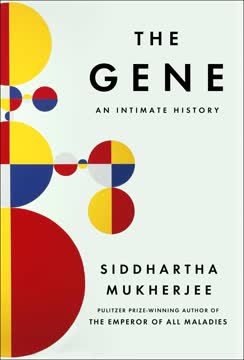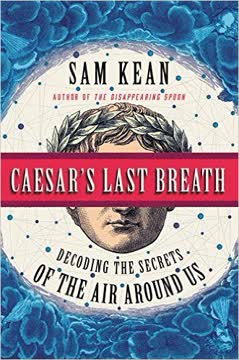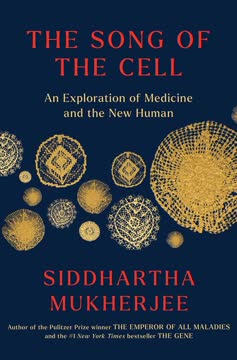Key Takeaways
1. The evolution of drugs: From natural remedies to synthetic marvels
"No nation in human history has taken as many drugs or spent as much money to get them as the United States does today."
Natural to synthetic: The journey of drug development began with ancient healers using plant-based remedies and progressed to modern synthetic compounds. This evolution reflects humanity's growing understanding of chemistry, biology, and the human body.
Milestones in drug discovery:
- Ancient times: Use of opium, cannabis, and other plant-based medicines
- 19th century: Isolation of active compounds from plants (e.g., morphine from opium)
- Early 20th century: Development of synthetic drugs (e.g., aspirin, sulfa drugs)
- Mid-20th century: Discovery of antibiotics and psychoactive drugs
- Late 20th century and beyond: Biotechnology and targeted therapies
The United States has become the world's largest consumer of pharmaceuticals, spending over $300 billion annually on prescription drugs. This reflects both the country's wealth and its approach to healthcare, which often emphasizes pharmaceutical solutions to medical problems.
2. Opium's legacy: The double-edged sword of pain relief and addiction
"Every effective drug, without exception, also comes with potentially dangerous side effects."
Pain relief and addiction: Opium and its derivatives have been both a blessing and a curse for humanity. While providing unparalleled pain relief, they have also led to widespread addiction and social problems.
Key developments in opioid history:
- Ancient use of opium for pain relief and spiritual purposes
- 19th century: Isolation of morphine and development of heroin
- 20th century: Synthetic opioids (e.g., fentanyl) and the opioid epidemic
- Ongoing challenges: Balancing pain management with addiction prevention
The opioid crisis in the United States exemplifies the complex relationship between beneficial drugs and their potential for harm. Despite efforts to control opioid use, addiction rates continue to rise, highlighting the need for better pain management strategies and addiction treatment.
3. Vaccination: Lady Mary's pioneering effort against smallpox
"Lady Mary had protected her son. He would never get smallpox again."
Inoculation breakthrough: Lady Mary Wortley Montagu's introduction of smallpox inoculation to England in the early 18th century marked a turning point in the fight against infectious diseases.
Milestones in vaccination:
- 1721: Lady Mary's son inoculated against smallpox
- 1796: Edward Jenner develops the smallpox vaccine
- 19th-20th centuries: Development of vaccines for various diseases
- 1980: Smallpox declared eradicated by the World Health Organization
Lady Mary's efforts paved the way for modern vaccination programs, which have saved millions of lives and eradicated or significantly reduced the incidence of many deadly diseases. However, the success of vaccines has also led to complacency and the rise of anti-vaccination movements, posing new challenges to public health.
4. The birth of antibiotics: Sulfa drugs and the dawn of modern medicine
"Sulfa kicked it off. Unlike other antibiotics made by living organisms, sulfa was created in a lab."
Miracle drugs: The discovery of sulfa drugs in the 1930s marked the beginning of the antibiotic era, revolutionizing the treatment of bacterial infections and saving countless lives.
Key developments in antibiotic history:
- 1932: Discovery of Prontosil (first sulfa drug) by Gerhard Domagk
- 1940s: Development of penicillin and other antibiotics
- 1950s-1960s: Golden age of antibiotic discovery
- Current challenges: Antibiotic resistance and the need for new drugs
The sulfa drugs demonstrated that synthetic compounds could effectively fight bacterial infections, opening the door to the development of numerous antibiotics. This breakthrough transformed medicine, dramatically reducing mortality from infectious diseases. However, the overuse of antibiotics has led to the emergence of antibiotic-resistant bacteria, posing a significant threat to global health.
5. Psychopharmacology revolution: Chlorpromazine and the treatment of mental illness
"CPZ changed the very soul of mental health care."
Mental health breakthrough: The discovery of chlorpromazine (CPZ) in the 1950s revolutionized the treatment of mental illness, particularly schizophrenia, and led to the development of modern psychopharmacology.
Impact of CPZ on mental health care:
- Reduced use of physical restraints and invasive treatments
- Enabled many patients to leave mental hospitals and live in communities
- Sparked the development of other psychoactive drugs
- Shifted the understanding of mental illness from purely psychological to biological
The introduction of CPZ marked a paradigm shift in psychiatry, leading to the closure of many large mental institutions and the rise of community-based mental health care. However, it also raised ethical questions about the use of drugs to control behavior and the potential for overmedication.
6. Sexual revolution and population control: The development of the Pill
"The Pill revolutionized the world's sexual habits and mores, opened a vast new range of opportunities for women, and—in ways beyond those of almost any other drug—changed our world."
Social transformation: The development of oral contraceptives in the 1950s and 1960s had far-reaching effects on society, particularly for women's rights and family planning.
Impact of the Pill:
- Gave women control over their fertility
- Enabled women to pursue higher education and careers
- Contributed to changing sexual norms and family structures
- Raised ethical and religious debates about contraception
The Pill exemplifies how drugs can have profound social and cultural impacts beyond their immediate medical effects. Its development also highlighted the complex interplay between scientific research, social needs, and commercial interests in drug development.
7. Statins and the cholesterol debate: Balancing benefits and risks
"No drug comes without side effects."
Cholesterol conundrum: The development of statins to lower cholesterol levels has been both a major medical breakthrough and a source of ongoing debate about their widespread use.
Key points in the statin debate:
- Effectiveness in reducing heart disease risk for high-risk patients
- Questions about benefits for low-risk individuals
- Potential side effects, including muscle pain and increased diabetes risk
- Debate over the role of cholesterol in heart disease
The statin story illustrates the challenges of modern drug development and use, including the need to balance potential benefits against risks, the influence of pharmaceutical marketing on medical practice, and the complexity of interpreting scientific evidence in the context of public health policy.
8. Monoclonal antibodies: The future of targeted therapies
"Monoclonal antibodies are the closest thing we have to true magic bullets."
Precision medicine: Monoclonal antibodies represent a major advance in targeted therapies, offering highly specific treatments for a range of diseases, including cancer and autoimmune disorders.
Advantages of monoclonal antibodies:
- Highly specific targeting of disease-causing molecules
- Fewer side effects compared to traditional drugs
- Potential for personalized treatments based on individual patient characteristics
- Versatility in treating various diseases
The development of monoclonal antibodies exemplifies the shift towards more precise, biologically-based therapies. While these drugs offer great promise, their high cost and complex manufacturing process pose challenges for healthcare systems and patient access.
9. The pharmaceutical industry: Balancing profit and public health
"Drug companies are private corporations; their primary responsibility is to generate profits for shareholders."
Ethical dilemmas: The pharmaceutical industry plays a crucial role in drug development but faces criticism for prioritizing profits over public health.
Key issues in the pharmaceutical industry:
- High drug prices and limited access to treatments
- Focus on profitable diseases rather than neglected tropical diseases
- Influence of marketing on prescribing practices
- Debate over intellectual property rights and drug patents
The tension between the profit motive and public health needs highlights the complex ethical landscape of drug development and distribution. While pharmaceutical companies argue that profits drive innovation, critics call for greater regulation and alternative models of drug development to address global health needs.
10. The future of drugs: Personalized medicine and digital innovations
"Drug discovery is experiencing a paradigm shift, whereby the explosion in genomic sciences is being harnessed to produce innovative therapies within shorter time frames."
Technological frontiers: Advances in genomics, data analysis, and biotechnology are opening new possibilities for drug development and personalized medicine.
Emerging trends in drug development:
- Personalized medicine based on individual genetic profiles
- Digital drugs with built-in sensors for monitoring patient compliance
- Use of artificial intelligence in drug discovery
- Gene therapies and CRISPR-based treatments
- Crowdsourcing and open-source approaches to drug development
These innovations promise more effective and targeted treatments but also raise new ethical and regulatory challenges. The future of drugs will likely involve a complex interplay of cutting-edge science, evolving healthcare systems, and ongoing debates about access, affordability, and the role of medicine in society.
Last updated:
FAQ
What's Ten Drugs: How Plants, Powders, and Pills Have Shaped the History of Medicine about?
- Exploration of drug history: The book by Thomas Hager delves into the history of ten significant drugs that have shaped medicine, from opium to modern pharmaceuticals.
- Cultural and medical implications: It examines how these drugs influenced cultural attitudes towards health, illness, and treatment.
- Interconnected narratives: Hager weaves stories of scientists, patients, and societal contexts, making the book engaging and informative.
Why should I read Ten Drugs by Thomas Hager?
- Engaging storytelling: Hager presents the history of medicine through vivid narratives and mini-biographies, making complex topics accessible.
- Insightful historical context: The book provides a comprehensive understanding of how specific drugs have transformed medical practices and societal norms.
- Relevance to current issues: It addresses ongoing debates in medicine, such as the opioid crisis and the commercialization of healthcare.
What are the key takeaways of Ten Drugs by Thomas Hager?
- Drugs are dual-edged: Every effective drug has potential side effects and risks, emphasizing the dual nature of pharmaceuticals.
- Impact on society: Drugs can change individual lives and societal structures, as seen with antipsychotics revolutionizing mental health care.
- Complexity of drug development: Drug discovery is often unpredictable, filled with serendipity and scientific trial and error.
What are the best quotes from Ten Drugs by Thomas Hager and what do they mean?
- “We are the People of the Pill.” Reflects the modern reliance on pharmaceuticals in American society.
- “Every effective drug, without exception, also comes with potentially dangerous side effects.” Reminds readers of the inherent risks associated with drug use.
- “For good or ill, CPZ changed it all.” Highlights the profound impact of chlorpromazine on mental health treatment.
How did opium influence medicine according to Ten Drugs by Thomas Hager?
- Historical significance: Opium is described as “the most important drug humans have ever found,” with a history that spans thousands of years.
- Cultural associations: It was revered in ancient cultures but also led to addiction and societal issues.
- Evolution of use: The transition from opium as a common medicine to recognizing its addictive properties influenced modern drug regulation.
How did the introduction of chlorpromazine (CPZ) change mental health care?
- Revolutionized treatment options: CPZ allowed patients with severe mental illnesses to manage their symptoms effectively.
- Deinstitutionalization movement: It led to a significant reduction in the number of patients housed in asylums.
- Cultural shift in perception: The success of CPZ helped change societal attitudes towards mental illness.
What role did the pharmaceutical industry play in the development of statins?
- Commercialization of health: The industry recognized the potential market for statins as cholesterol became linked to heart disease.
- Influence on medical guidelines: Financial support for research often shaped the narrative around statins.
- Profit-driven motives: The success of statins highlighted the profitability of chronic disease management.
How does Ten Drugs by Thomas Hager address the opioid crisis?
- Historical context of opioids: Hager traces the history of opiates and their evolving role in medicine.
- Impact of synthetic opioids: The book highlights the emergence of synthetic opioids, such as fentanyl.
- Call for better understanding: Hager advocates for a nuanced understanding of addiction and comprehensive approaches to treatment.
What are the implications of the discovery of monoclonal antibodies according to Ten Drugs?
- Targeted therapies: Monoclonal antibodies allow for highly specific treatments for various diseases.
- Biotechnology revolution: They have spurred a new era in biotechnology, shifting focus to biologics.
- Economic impact: The commercialization of monoclonal antibodies has created a lucrative market.
How does Ten Drugs by Thomas Hager explore the relationship between drugs and culture?
- Cultural shifts: Hager examines how the introduction of certain drugs has led to significant cultural changes.
- Public perception of mental health: The development of antipsychotic medications changed the public’s understanding of mental illness.
- Ethical considerations: Hager raises questions about the ethics of drug marketing and the responsibilities of pharmaceutical companies.
What is the significance of the Harrison Act of 1914 in Ten Drugs by Thomas Hager?
- First federal drug law: The Harrison Act marked a pivotal moment in U.S. drug policy.
- Shift in perception: It reflected a growing recognition of addiction as a public health issue.
- Long-term effects: The act set the stage for future drug legislation and shaped the landscape of drug regulation.
What challenges in drug development are discussed in Ten Drugs by Thomas Hager?
- Rising costs and complexity: The pharmaceutical industry faces increasing costs associated with drug development.
- Market saturation: Finding new blockbuster drugs is becoming more challenging.
- Public scrutiny and trust: Companies must balance profit motives with ethical responsibilities to maintain trust.
Review Summary
Ten Drugs explores the history and impact of ten influential medications, from opium to antibiotics. Readers praise Hager's engaging writing style and thorough research, making complex topics accessible. The book covers drug development, societal effects, and ethical concerns in the pharmaceutical industry. Many found it enlightening and enjoyable, though some felt certain drugs received disproportionate attention. Critics appreciated the historical context and balanced perspective on benefits and risks. Overall, it's considered an informative and thought-provoking read for those interested in medicine and its cultural implications.
Similar Books






Download PDF
Download EPUB
.epub digital book format is ideal for reading ebooks on phones, tablets, and e-readers.




